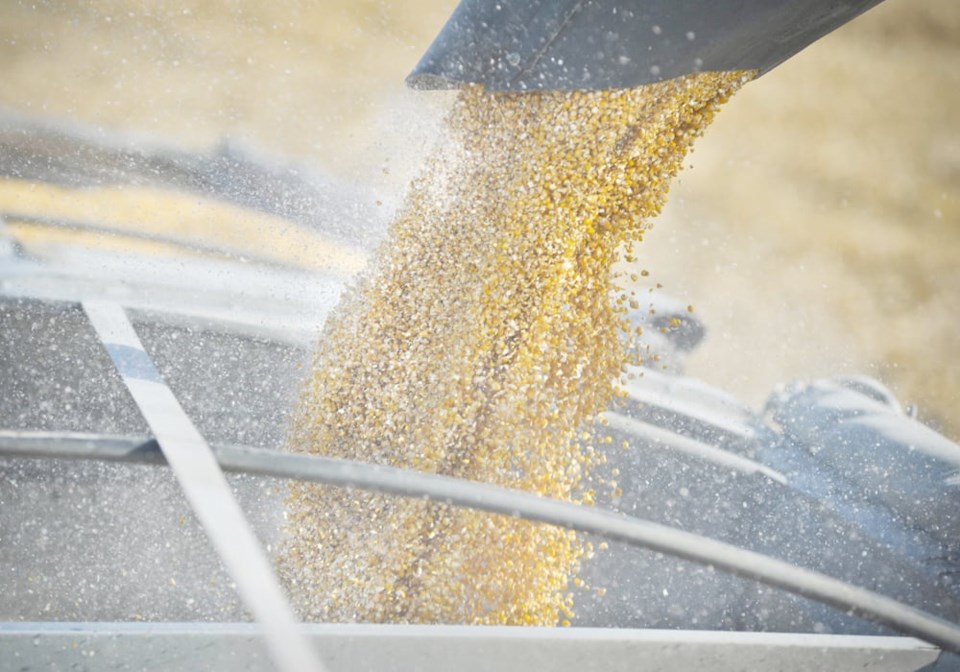WESTERN PRODUCER -- There are some early-season concerns about the U.S. corn crop.
An estimated 45 percent of the crop was in the D1 to D4 drought categories as of June 6. As well, 61 percent was rated good to excellent as of June 11, which is unusually low.
James Mintert, director of the Center for Commercial Agriculture at Purdue University, said most farmers planted the crop in a timely manner, but it doesn’t look that way. He was struck by how late some of the corn looked on a recent crop tour of Indiana.
“You can see some issues with respect to emergence, some spotty stands,” he said.
“Things (are) looking just a little more ragged than what you’d normally expect to see.”
DTN lead analyst Todd Hultman said corn is already in a weather market.
“We’ve got such dry concerns across so much of the corn belt — so many areas that need rain,” he said in a recent DTN webinar.
“It’s not new or unique to have hot and dry weather in a summer, but it certainly is unique to be this dry this early in June.”
Hultman thinks the U.S. Department of Agriculture is “behind the curve,” noting that the market seems to be banking on a lower yield.
December corn futures rebounded after briefly dipping below US$5 per bushel in mid-May. The market closed at $5.49 on June 14.
U.S. corn prices influence Canadian wheat and barley prices, so growers are keeping a keen eye on what is happening in the Midwest.
The USDA is sticking with its 2023-24 trend-line yield estimate of a record 181.5 bushels per acre.
Mintert pointed out that actual yields have been below the trend line for the past four years.
However, he thinks the USDA’s estimate of 92 million acres sounds about right.
The USDA is forecasting a record 387.75 million tonnes of production, up from an estimated 348.75 million tonnes this year.
That would result in 57.32 million tonnes of ending stocks, a 56 percent increase over this year and the second largest carryout in the last 36 years.
“That explains the negativity we’re seeing with respect to prices,” said Mintert.
The USDA is forecasting a 2023-24 national average cash corn price of $4.80 per bu., a $1.80 drop from this year based on that ugly carryout number.
“What takes place this summer with respect to crop production is going to have a huge impact on how that plays out,” he said.
Hultman could see a scenario where the national average yield falls to 178 bu. per acre and production drops to 370 million tonnes. Carryout would then plunge to 38 million tonnes, or about the same level as the current crop year.
That could drive the national average cash price back up to the low-$6 per bu. range.
One of the reasons 2023-24 ending stocks will be so high is this year’s lacklustre export program, which will result in a large 2022-23 carryover.
Only 31 million tonnes of U.S. corn had been shipped as of June 1, down one-third from the same time a year ago.
The United States has been losing market share to cheaper corn out of Brazil, which has another bin-busting crop on the way that should start hitting the market in July.
“The outlook for our U.S. corn exports has really been beat up,” said Hultman.
However, the poor start to the 2023 crop is resulting in a mini-rally. Mintert believes the next target for resistance for December corn futures is the $5.70 to $5.75 range and then it will meet stronger resistance in the vicinity of $6 if hot and dry weather persists in the Midwest.
But if there is a change in weather patterns and improved crop conditions, it wouldn’t be surprising if corn dips down below that $5 level again, he said.
Hultman said it is an extremely difficult year for predicting weather because the world is in the neutral phase of the ENSO weather cycle.
Contact [email protected]




